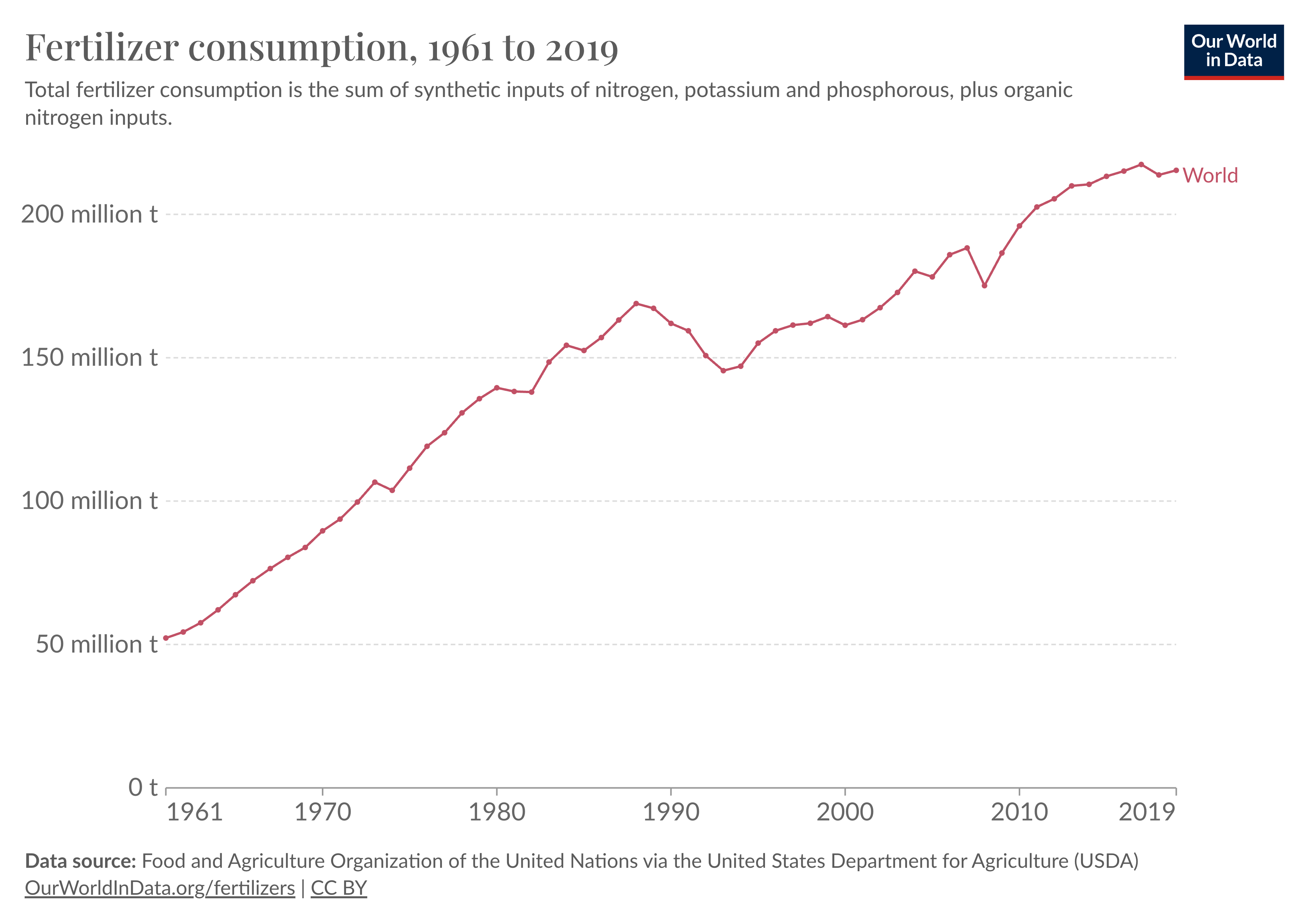Answer
Since 1965, the amount of fertilizer consumed has increased from 52.27 million tonnes to 215.37 million tonnes in 2019. This allows for significant growth in agricultural output, bringing us both the plants and meat we consume, as much of what is grown is used for animal feed.

Increases in fertilizer consumption were brought about by the Haber-Bosch process, a chemical procedure that fixes the nitrogen in the atmosphere to produce ammonia, the basis of synthetic fertilizers used globally. This process allowed for the mass production of plant fertilizers, which met the food needs of a growing population but came at a significant price.
Approximately two-thirds of applied fertilizer is lost to the environment in the form of runoff, negatively impacting stream and coastal ecosystem health.
Many efforts are being made to limit reactive nitrogen waste from fertilizer runoff, including inventions to recycle fertilizer, efficient fertilizer application strategies, and methods to reduce soil erosion. These methods, combined with intentional consumption, are important steps forward in mitigating the impacts of agriculture on nitrogen waste.